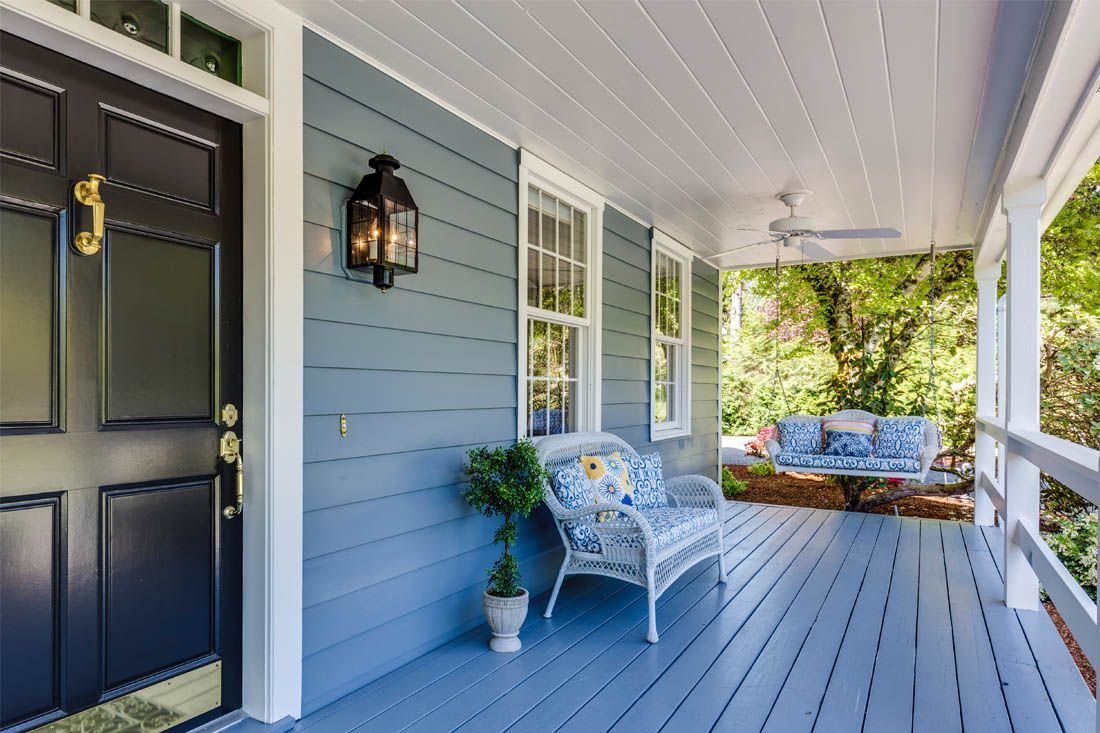
Where you put your car keys, who won the footy premiership three years back, the new prime minister of New Zealand’s name – all very much socially acceptable things to forget. Your home loan rate shouldn’t be on that list.
It’s a fair bet that your home loan repayments are one of your biggest household expenses.
Yet it’s surprising how many borrowers haven’t kept up with what their home loan rate currently is.
In fact, a new report by Mozo shows that 42% of mortgage holders have no idea what interest rate they’re paying on their home loan.
And it’s an oversight that can cost home owners dearly.
How does your loan rate shape up?
It’s not just that large numbers of borrowers can’t pinpoint their loan rate.
Mozo also found one-in-five home owners have never compared rates since taking out their loan.
Your home loan may have had a competitive rate back in the day, but in a rapidly changing mortgage market, that may no longer be the case. And with the cash rate at its highest since late 2011 , there’s little room for complacency.
For a quick check of how your home loan rate stacks up, head to your latest loan statement to find out what it is. It should show the rate you’re paying. Or call us, and we’ll let you know.
By way of comparison, the average home loan interest rate for owner-occupiers is currently 6.4%, and 6.3% for new home loans, according to the Reserve Bank of Australia.
Why it pays to regularly review your home loan
Staying on top of your loan isn’t just about the rate you pay.
Your loan might have been the right choice for you a few years ago. But our lives evolve, and your mortgage may not have the features you need for your current lifestyle and budget.
That’s why it’s worth taking a close look at your loan at least annually, or whenever you experience a major life change such as starting a family.
Understanding how your loan is performing for both rate and features is easy. Speak to us about a home loan review.
As part of our review, we can let you know:
– the rate you are paying;
– if your loan offers the features you want; and
– whether you could save by refinancing.
Is refinancing right for you?
If you’ve been wondering if you could do better on your home loan, give us a call today to discuss your refinancing options.
We’ll help you work out if refinancing is the right step for you and how much you could save by switching to a new loan and/or lender.
Disclaimer: The content of this article is general in nature and is presented for informative purposes. It is not intended to constitute tax or financial advice, whether general or personal nor is it intended to imply any recommendation or opinion about a financial product. It does not take into consideration your personal situation and may not be relevant to circumstances. Before taking any action, consider your own particular circumstances and seek professional advice. This content is protected by copyright laws and various other intellectual property laws. It is not to be modified, reproduced or republished without prior written consent.

When it comes to buying investment properties, younger Australians are punching above their weight, with Millennials taking the title as the nation’s most active generation for property investment.
Investors are continuing to flock to the property market, with the Australian Bureau of Statistics saying the volume of new investor loans in February was 21.5% higher compared to a year ago.
Investment loans now make up over half of the growth in new loans over the past year.
But in an unexpected twist, it isn’t older generations of Aussies who are leading the charge to buy rental properties.
Younger investors flex their muscles
New data from the Commonwealth Bank shows Millennials (those born between 1981 and 1996) accounted for almost half (46%) of the bank’s new property investors in 2023.
And almost one in three of those buyers purchased an investment property on their own, without the help of a partner.
Gen Xers (1965 – 1980) are also snapping up rental properties, accounting for 37% of CommBank’s new investment property loans throughout 2023.
Rentvesting – get into the market sooner
Rentvesting is buying property where you can afford, possibly a smaller property in a lower-cost area, and then renting where you want to live.
The CommBank data shows plenty of investors are taking this approach and it makes sense: the average investment loan size is just over $528,000 compared to $624,000 for owner occupiers.
And remember, if you purchase the right property, as an investor you could expect to earn rental income. That’s extra cash for loan repayments.
In this way, rentvesting could be an opportunity to get started on the property ladder sooner rather than later, without having to make too many lifestyle sacrifices. As the investment property grows in value over time, it can become the stepping stone to buy an owner-occupied home.
The market seems attractive for investors right now
The property market offers plenty of appeal to investors right now.
Rental vacancy rates are at a record low of just 0.7% nationally. Property listings have increased in most cities , giving buyers more choice, and the past 12 months have seen rents skyrocket 11.4% across our state capitals.
Add in growing expectations that interest rates will start to fall later this year, and CoreLogic says it’s likely that property values will continue to rise, giving those who buy today the potential to notch up handy capital gains.
Are you ready to become a property investor?
Talk to us today to find out how much you could borrow, and your likely loan repayments. It could help you become a property investor sooner!
Disclaimer: The content of this article is general in nature and is presented for informative purposes. It is not intended to constitute tax or financial advice, whether general or personal nor is it intended to imply any recommendation or opinion about a financial product. It does not take into consideration your personal situation and may not be relevant to circumstances. Before taking any action, consider your own particular circumstances and seek professional advice. This content is protected by copyright laws and various other intellectual property laws. It is not to be modified, reproduced or republished without prior written consent.

You may not feel richer, but if you’re a homeowner, there’s a decent chance your personal wealth has surged over the past 12 months thanks to soaring property values. And it could open up a world of exciting possibilities.
Sometimes you’ve just got to shake your head in disbelief at the resilience of the property market.
Despite a cost of living crunch and higher interest rates, national home prices have somehow ploughed on over the last year and a bit.
CoreLogic says home values nationally are up $71,832 since January 2023 – a jump of 10.2% in just 14 months – which averages out to an increase of $5,130 per month.
To put that into perspective, last financial year the average full-time Australian worker earned $6,565 per month after tax.
The thing is, higher values can give homeowners much more than a warm inner glow.
Rising property prices can also provide opportunities to boost your wealth further – without having to hammer in a For Sale sign out the front.
Let’s take a closer look.
Your home equity can unlock further wealth
An uptick in your home’s value can drive an increase in home equity – assuming your mortgage hasn’t increased.
Home equity is the difference between the market value of your home and the balance of your home loan.
So if your home is valued at $1,000,000, for example, and you have $500,000 left on your home loan, your home equity is $500,000.
The exciting thing about home equity is that it’s not just a number on a page. It can be a valuable resource that helps you forge ahead financially.
Three ways to make home equity work harder
Plenty of banks let you use home equity as security for additional borrowing or to refinance your current home loan – all without having to sell your home.
Here are three ways you could make your newly enlarged home equity work harder:
1. Refinance to save on interest
Your home loan is probably one of your biggest household expenses.
Refinancing to a new loan or lender can help you save with a more competitive rate, or by taking advantage of loan features that help you pay off the mortgage sooner (such as an offset account).
And the more home equity you have, the easier it can be to refinance.
2. Use your home’s equity to fund an investment property
Your home equity may be used as a deposit on an investment property in lieu of cash savings.
By becoming a landlord, you could benefit from regular rental income, potential tax savings, and an increase in the value of your rental property over time.
Not to mention having a nice little nest egg that could help fund your retirement or – if you’re feeling particularly generous – pass on to your children.
3. Put home equity to work funding renovations
One of the beauties of home ownership is that you can add value to your property – regardless of what the market is doing – with a few well-planned renovations.
But how do you fund those renovations if you’re tight for cash?
Well, one way is to tap into your home equity to fund the renovations.
So how does ‘cashing out equity’ work?
It might sound complicated – but we promise it’s not.
Let’s say you bought an $800,000 house three years ago that, partly due to last year’s property price surge, is now worth $1 million.
And let’s also say you originally took out a $600,000 loan for that house, which you’ve managed to pay down to $500,000 (you little beauty!).
By refinancing that $500,000 loan into a $700,000 loan (70% of your property’s new market value), you can unlock $200,000 in equity to help fund your renovations or as a deposit to buy an investment property.
It’s also worth noting that banks typically let you borrow up to 80% of a property’s market value.
Which means if you upped the ante and refinanced to an $800,000 loan, you might be able to unlock $300,000 in equity.
So if you’d like to make your home equity work harder, call us today for a clearer picture on how much equity you have – and how you can tap into it to potentially grow your wealth.
Disclaimer: The content of this article is general in nature and is presented for informative purposes. It is not intended to constitute tax or financial advice, whether general or personal nor is it intended to imply any recommendation or opinion about a financial product. It does not take into consideration your personal situation and may not be relevant to circumstances. Before taking any action, consider your own particular circumstances and seek professional advice. This content is protected by copyright laws and various other intellectual property laws. It is not to be modified, reproduced or republished without prior written consent.

Nobody likes missing out on a good thing. But then again, who likes overpaying? So how do you strike the right balance when both fears can work against one another?
The property market rarely stands still. Interest rate movements, the number of homes listed for sale, and even the time of year can all drive shifts in the market.
And change plus commitment isn’t something we’re all comfortable with.
It can even see us put mental traps in place that mean we panic about missing out on a good buy, or alternatively, we convince ourselves it’s better to sit things out on the sidelines.
Let’s take a look at three mind games that can work against home buyers – and how you could beat them.
Fear of missing out – uh oh, FOMO
FOMO can be a real thing for home buyers, and it’s possibly starting to have an impact on the property market once more.
According to REA Group , today’s buyers are being gripped by a sense of urgency to make their move into the market.
The reason?
Growing expectations of interest rate cuts are sparking concerns that property values may soon skyrocket again.
Already, research firm CoreLogic says market data points to further growth in home prices.
The result is that autumn is shaping up as a particularly busy season as buyers look to race in before values head higher.
So should you sprint into the market too?
Well, before racing in to buy a home, have a chat with us and we can let you know if you’re home loan ready today.
Fear of better options – let go of FOBO
Some buyers never quite get into the market because of nagging doubts that an even better property could come along.
The thing is, no home is perfect. Buyers often find a bit of compromise is what gets them into the market.
To avoid FOBO, jot down the essential features you’re looking for in a home. Then back it up with a list of nice-but-not-necessary features.
If you can find a property that ticks the boxes for all, or most, of the must-haves you can be confident you’re buying a place that will suit the majority of your needs.
Fear of over-paying – forge a path past FOOP!
It’s possible that humans have wrestled with the question “am I paying too much?” for centuries.
No one wants to pay over the odds for their home.
However, this shouldn’t freeze you into taking no action at all.
Two simple steps could help dispel concerns about whether you’re paying too much for a property.
First, do plenty of research and check out comparable home values in the area you plan to buy in. It can help you identify if the asking price for a place is reasonable or over-the-top.
Remember, you can always attempt to negotiate on price – especially if you have home loan pre-approval, which shows sellers you’re a serious buyer.
Second, and perhaps more importantly, remember that property values typically rise over time.
For example, data from SQM Research shows that back in 2009 the average asking price for a house in Sydney was about $755,000. Fast forward to March 2024, and that figure has jumped to more than $1.9 million.
Hence the saying: “time in” the market generally beats “timing” the market.
Because if you plan to hold your home or investment for the long term, chances are you’ll look back at what you paid, and be glad you purchased when you did.
But … to help make sure you don’t purchase a house that’s beyond your means, get in touch with us today and we can help you work out your borrowing power.
In turn, you’ll be able to work out what your home buying budget is, and what your monthly home loan repayments will likely be.
Disclaimer: The content of this article is general in nature and is presented for informative purposes. It is not intended to constitute tax or financial advice, whether general or personal nor is it intended to imply any recommendation or opinion about a financial product. It does not take into consideration your personal situation and may not be relevant to circumstances. Before taking any action, consider your own particular circumstances and seek professional advice. This content is protected by copyright laws and various other intellectual property laws. It is not to be modified, reproduced or republished without prior written consent.

There’s something very special about moving into a newly built home or putting the finishing touches on a major renovation. Maybe it’s the look and feel of new paint and fresh flooring, or just knowing you’ve kicked a worthwhile goal.
Whatever the motivation, plenty of Aussies are rolling up their sleeves right now, with the value of building approvals jumping 14.7% from December 2023 to January 2024.
Meanwhile, on the renovation front, we’re not just pimping our pads for looks and lifestyle.
Almost half the home renovations carried out in 2023 were designed with a ‘green’ focus to improve energy efficiency, according to Houzz Research.
The upshot is that planning a new build or renovation can be exciting and rewarding.
But long before you kick back and enjoy the fruits of your (or your builder’s) labour, you may need to decide how to pay for it all.
And a construction loan could be the right tool for the job.
How do construction loans work?
Construction loans work a bit differently from regular home loans.
Instead of receiving a lump sum from the lender, which is usually the case with a traditional home loan, a construction loan drip feeds funds in line with various stages of the project.
If you’re building a new home, for instance, a lender will typically make progress payments across five main stages, including:
– laying the slab;
– erecting the frame;
– reaching lock-up:
– fitting out your home; and
– completion of construction.
This arrangement can offer valuable advantages.
For starters, paying out smaller sums during the construction period may provide a level of protection for the borrower against a builder being paid for work that isn’t completed.
In addition, while the project is underway loan interest is only calculated on the funds drawn down, not on the final total value of the loan.
During the construction period, you’ll generally be asked to make interest-only payments. This can be a lot kinder on your household budget than principal plus interest payments, especially if you’re renting while the builders are at work.
What to watch for with construction loans
Building projects don’t last forever (though it can feel that way at times), and neither do construction loans.
When your new home or renovation is complete, your construction loan will typically roll into a regular home loan.
It can all sound very simple – and it usually (with any luck) it is.
However, a key challenge with construction loans is that they’re not offered by every lender.
That’s why it can be important to speak to us at an early stage.
We can help you identify lenders with construction loan options that meet your needs and budget, and guide you through the application process.
Our support can save you time and leave you free to focus on your building project.
So if you’re looking to build or renovate, talk to us today about your funding options and we’ll aim to help you get the ball rolling on your construction project sooner.
Disclaimer: The content of this article is general in nature and is presented for informative purposes. It is not intended to constitute tax or financial advice, whether general or personal nor is it intended to imply any recommendation or opinion about a financial product. It does not take into consideration your personal situation and may not be relevant to circumstances. Before taking any action, consider your own particular circumstances and seek professional advice. This content is protected by copyright laws and various other intellectual property laws. It is not to be modified, reproduced or republished without prior written consent.

Spare cash can be tight right now (cost of living crunch, anyone?). But if you’ve still got some savings plus a home loan, there’s a way you could make your surplus funds work harder.
Ever heard of an offset account?
They’re becoming an increasingly popular add-on feature to home loans, with new data showing that homeowners are stashing money in their offset accounts at a record pace.
In fact, balances in offset accounts have increased to 11% of credit limits , the highest share since APRA started collecting data on this particular stat in March 2019.
This essentially means that, on average, people with offset accounts are only paying interest on 89% of their mortgage each month.
So how do home loan offset accounts work?
An offset account is a cash account linked to your home loan.
The bank doesn’t pay you interest on the offset account. Instead, the balance of the account is deducted from (or ‘offset’ against) the balance of your home loan when loan interest is calculated.
For example, say you have $20,000 in an offset account and a home loan worth $615,000, which is about the size of the average new mortgage Australia-wide.
Instead of monthly interest being based on the full $615,000, the lender will only charge interest on $595,000 – that’s the $615,000 loan minus the $20,000 in the offset account.
This means you pay less loan interest each month.
And there’s an added bonus: because your loan repayment amount stays the same, more of each payment goes towards paying down the loan principal, which in turn helps to reduce next month’s interest cost.
And so on and so forth.
In this way, offset accounts are a way for borrowers to swing the mortgage pendulum more in their favour, with savings on interest plus the potential to pay off their home loan sooner.
Why are offsets so popular right now?
Long story short, offsets are increasingly popular right now in no small part due to high interest rates.
And because no interest is paid on the balance of the offset account, there is no tax impact.
That’s quite different from having a separate savings account, where a high income earner can lose a sizeable chunk of their interest earnings to tax.
The icing on the cake is that the home loan interest rates that lenders charge are typically higher than the interest returns they pay on savings accounts.
This means offset accounts can let borrowers make their spare cash work harder by saving more on loan interest than they could earn with a regular savings account.
Last but not least, some lenders allow you to have multiple offset accounts (with debit cards attached!) linked to the one home loan, which can allow you to put all your money to work each month – as opposed to having it in different buckets across a number of low-interest transaction accounts.
What to consider with offset accounts
First and foremost, the money you put into your offset account is potentially money you could be investing elsewhere.
So you’ll have to weigh up whether that money is better served by helping you pay off your home loan sooner, or investing towards your future in other assets.
Secondly, it’s important to be confident you are paying a competitive home loan interest rate.
That’s because offset home loans may come with loan fees and/or higher interest rates than more traditional loans. Not always, but sometimes.
Last but not least, offset accounts don’t tend to work with fixed-rate home loans. But … there are ways you could split your home loan so that it’s part fixed and part variable (with your offset account attached to the variable side).
That’s why talking to us about your home loan needs is important.
We can compare across our wide panel of lenders to help line you up with a loan that matches your needs – and discuss whether an offset account might be a suitable option for you.
Disclaimer: The content of this article is general in nature and is presented for informative purposes. It is not intended to constitute tax or financial advice, whether general or personal nor is it intended to imply any recommendation or opinion about a financial product. It does not take into consideration your personal situation and may not be relevant to circumstances. Before taking any action, consider your own particular circumstances and seek professional advice. This content is protected by copyright laws and various other intellectual property laws. It is not to be modified, reproduced or republished without prior written consent.

Need a home loan in a hurry? You could be in luck. Plenty of lenders are keen to crunch loan approval times at present – but there’s a lot borrowers can do to potentially speed up the process, too.
Finding a home to buy can take time, and when the right place comes along it can feel as though you need to sign the sale contract fast to stake your claim.
But from there you’re going to need a home loan, and that’s where timing becomes critical.
The good news for home loan applicants is that average turnaround times have reached new record speeds at some of the bigger banks, while processing periods for smaller lenders have also reduced, according to the latest Broker Pulse survey.
But don’t let that lull you into a sense of complacency.
It’s important to have your loan ready to go by settlement – usually six weeks after you’ve signed and exchanged contracts (however this period of time can potentially be negotiated with the seller).
Otherwise, if you don’t have finance sorted by settlement date, the seller may be able to charge interest and penalty fees.
So, there can be a lot riding on getting your home loan approved in a timely fashion.
The general rule for loan approval times
How soon your home loan can be arranged often varies between lenders.
Some lenders boldly claim that it can take as little as an hour.
But that’s not usually the case.
To try and play it safe, allow about four to six weeks from the time you submit an application to having the funds available.
But of course, if you require funds sooner than that, then it could be a matter of us helping you line up a lender with quicker turnaround times (and then having us hassle them a bit for good measure).
What’s usually more important, however, is that you focus on the home loan that matches your needs, rather than racing in for a mortgage that can be arranged in record time.
5 ways to help speed up the home loan process
Fortunately, borrowers can do plenty to try and speed up the loan process.
Here are five steps you can take to help keep application and approval times tight:
1. Talk to us first
We can explain your borrowing power, let you know how big a deposit you may need, and check if your finances are in the shape it takes to get the green light from lenders. We also have access to resources that estimate how long approval times currently are with potential lenders.
2. Get your paperwork together
Gather all the documents a lender is likely to ask for, including copies of payslips, birth certificates and other ID, plus bank account statements for the past 3-6 months. If you’re unsure, this is a step we can help you with!
3. Try and hold off on any major changes
Big life changes, such as starting a new job or business just before you apply for a loan, can leave lenders asking questions. Try to maintain your budget – your usual spending/saving patterns – and your current job, to avoid a ‘please explain’ from lenders, which could delay loan approval.
4. Double-check you’ve completed the application accurately
Any mistakes on your application form can see the paperwork returned to you for corrections, putting the brakes on the whole process. Once again, we can help minimise any potential discrepancies in your application.
5. Ask us about loan pre-approval
Waiting until you’ve paid a deposit to apply for a mortgage can be a high-stakes, high-stress strategy. Loan pre-approval is a way to help you speed up the loan application process while also potentially boosting your bargaining power with vendors.
Call us today for more tips on getting your loan across the line – we’d love to help you move into your new home sooner.
Disclaimer: The content of this article is general in nature and is presented for informative purposes. It is not intended to constitute tax or financial advice, whether general or personal nor is it intended to imply any recommendation or opinion about a financial product. It does not take into consideration your personal situation and may not be relevant to circumstances. Before taking any action, consider your own particular circumstances and seek professional advice. This content is protected by copyright laws and various other intellectual property laws. It is not to be modified, reproduced or republished without prior written consent.

Location may be a big driver of property prices, but in any given suburb a few streets can be all that separates paying top dollar for a home or potentially scoring a bargain. Here’s how to use a tool to find pockets of value in any given neighbourhood.
Each suburb has its own median house price, and sites like realestate.com.au can provide a useful guide to median values for a particular postcode.
However, the median is obviously only the middle point in each suburb’s dataset – and it’s common for prices to vary widely across a single suburb.
Fortunately, there is an easy online tool that can help you identify more affordable pockets in the suburbs you’re looking to buy in.
New interactive price tool
PropTrack has developed an interactive property price tool that reveals the median values across different parts of each suburb.
The price differences can be surprising.
For example in Beecroft, on Sydney’s leafy north shore, the median house price is about $2.4 million.
But as PropTrack’s price tool shows, in certain parts of Beecroft, the median rises to more than $2.8 million.
Yet, several streets away, that figure is closer to $2.2 million.
There is a reason for the $600,000 difference.
The more affordable parts of the neighbourhood lie adjacent to the M2 Hills Motorway.
It’s a similar story in Melbourne’s popular inner suburb of Fitzroy North.
Known for its character-filled terrace houses, Fitzroy North has a median house value of $1.6 million.
But if you want to live near Edinburgh Gardens – the suburb’s attractive parkland – be prepared to pay closer to $3 million.
In Brisbane’s Fortitude Valley, the trendy James Street Market side of James Street has a median house price of $3 million, whereas across the road towards Brunswick Street there’s a median house price of under $1.9 million.
These price differences are not unusual.
According to a PropTrack analysis , home buyers can typically save around $365,000 by buying in the more affordable areas of a suburb.
In some neighbourhoods though the price gap becomes more of a chasm.
In the Perth suburb of Subiaco, for instance, several pockets of homes have median values topping $2 million.
Head just around the corner to Subiaco Oval and the surrounding homes are priced closer to $840,000.
What to watch with bargain buys
By this stage you’ve probably noticed a trend.
Nearby features can have a real impact – good and bad – on surrounding property values.
Access to the beach, great views or a local park can push property values higher.
On the other hand, homes bordering a 6-lane highway or nearby industrial estate can offer bargain buying – as long as you’re prepared to live with whatever is keeping the price lower.
And then there may be not-so-obvious factors – such as flood zones or upcoming changes to council zoning – so it’s worth doing your research.
After all, there’s a lot you can do to renovate a home, but you can’t change the location.
Seizing opportunities
That said, pricing differences within suburbs can offer opportunities to save.
A single street can be all that separates an expensive home from its more affordable neighbour.
Buying in the cheaper neighbourhood lets you enjoy all the amenities of the more expensive postcode, without the higher price tag.
It’s also worth keeping tabs on any planned local developments that could have the potential to transform today’s ugly duckling pocket into tomorrow’s upmarket enclave.
Thinking of buying? Call us today to understand your borrowing power – it’ll help let you know where you can afford to buy.
Disclaimer: The content of this article is general in nature and is presented for informative purposes. It is not intended to constitute tax or financial advice, whether general or personal nor is it intended to imply any recommendation or opinion about a financial product. It does not take into consideration your personal situation and may not be relevant to circumstances. Before taking any action, consider your own particular circumstances and seek professional advice. This content is protected by copyright laws and various other intellectual property laws. It is not to be modified, reproduced or republished without prior written consent.

Great news for home buyers! After an extended run of low listings, the number of homes coming onto the market is skyrocketing. So could this have an impact on the property market? Let’s take a look.
Take a look around your local suburb, and chances are you’ll see freshly minted For Sale signs popping up all over the place.
That’s because a large number of homes are coming onto the market.
Research firm PropTrack says the property market is off to a strong start for the year, with the number of new listings nationally on realestate.com.au up 12% year-on-year in January.
Melbourne and Sydney had their busiest January in over a decade.
Activity was also strong in Hobart, Brisbane and Adelaide, with Canberra experiencing its busiest-ever January for new listings.
Only Perth bucked the trend, recording slightly fewer new listings this year compared to January 2023.
Why the uptick in listings?
The rise in new listings reflects strong demand, very low unemployment and population growth.
Home buyers are also enjoying a more stable interest rate outlook.
February saw rates remain on hold, and PropTrack says financial markets are now expecting a reasonable chance that interest rates may start to fall later in the year.
What does more listings mean for home buyers?
More homes coming onto the market gives buyers the benefit of increased choice, and that’s a real plus if you are looking for your first home or upgrading to your next place.
But the rise in listings may not push home prices down.
That’s because we are still seeing plenty of keen buyers.
As a guide, CoreLogic estimates 115,241 homes were sold over the three months ending January 31 – an 11.9% increase on the same period last year, with high levels of migration being a big driver of demand.
CoreLogic adds that expectations of lower rates later this year could see house price growth accelerate.
How you can prepare
More choice can be a good thing for buyers. However, it can become easy to lose track of what you’re looking for in a property, especially if you’ve attended a large number of inspections.
That’s when it helps to draw up a list of must-have home features (such as aspect, block size or parking requirements) followed by nice-but-not-necessary features (like, say, a swimming pool or a shed) to assess each home you visit.
It also makes sense to be ready to act when you see a property you’d like to buy.
Having home loan pre-approval in place lets you set a buying budget, so you can focus on homes within your price range. It also means you can make an offer with confidence – and stay one step ahead of less-organised buyers.
Talk to us today to get your home loan ducks in a row and take advantage of a wider choice of homes listed for sale.
Disclaimer: The content of this article is general in nature and is presented for informative purposes. It is not intended to constitute tax or financial advice, whether general or personal nor is it intended to imply any recommendation or opinion about a financial product. It does not take into consideration your personal situation and may not be relevant to circumstances. Before taking any action, consider your own particular circumstances and seek professional advice. This content is protected by copyright laws and various other intellectual property laws. It is not to be modified, reproduced or republished without prior written consent.

Lending to property investors is soaring once again. We lift the lid on what’s driving investor interest – and what it could mean for the property market throughout 2024.
It looks like property investors are back … and in a big way.
The latest ABS figures show that in December 2023, banks lent over $26 billion in new home loans – and one-third of this figure, a whopping $9.5 billion, was to property investors.
That equates to 36.2% of all housing loans – the highest market share for property investors since mid-2017.
It’s also quite an uptick from December 2020, when the ABS says investors took out just 23.6% of mortgages.
So why the big shift in recent times?
What makes an investment property so attractive?
There are many reasons why people may love owning a rental/investment property.
An investment property can be a source of extra income, and right now, some investors are pocketing very attractive rental yields (that’s annual rent divided by the purchase price of the property).
PropTrack, for example, is reporting yields as high as 9% in some suburbs.
Investors may also expect to see their property grow in value over time, which could add up to some pretty impressive capital gains.
CoreLogic looked at the results of 86,000 property resales in the third quarter of 2023, and found 93.5% were sold for a profit, with the median gain coming at $298,000. Not bad at all.
And home values are tipped to jump a further 6% in 2024, according to ANZ Bank.
Add in rental vacancy rates hitting record lows of 1.1% in January 2024 , and many investors are attracting good tenants, which can be great for cash flow.
How could the return of investors impact the market?
On a personal level, buying an investment property could potentially be a boost for your long-term financial well-being.
ABS has acknowledged that rising household wealth in Australia is being supported by house prices that have continued to grow despite higher rates.
More broadly, PropTrack points out that the re-emergence of investor activity “heralds good news for the overall health of the market, helping to drive more new construction”.
Long story short, the benefits of more rental properties could extend beyond individual investors.
Is an investment property on your radar?
If you’re thinking about buying a rental property, or you’d like to add to your current property portfolio, talk to us today about your options for an investment loan.
We can help you work out how much equity you may be able to leverage, as well as your overall borrowing capacity.
From there, we can help you track down a suitable mortgage with a competitive rate from our broad suite of lenders, leaving you free to focus on finding your ideal investment property.
Disclaimer: The content of this article is general in nature and is presented for informative purposes. It is not intended to constitute tax or financial advice, whether general or personal nor is it intended to imply any recommendation or opinion about a financial product. It does not take into consideration your personal situation and may not be relevant to circumstances. Before taking any action, consider your own particular circumstances and seek professional advice. This content is protected by copyright laws and various other intellectual property laws. It is not to be modified, reproduced or republished without prior written consent.
